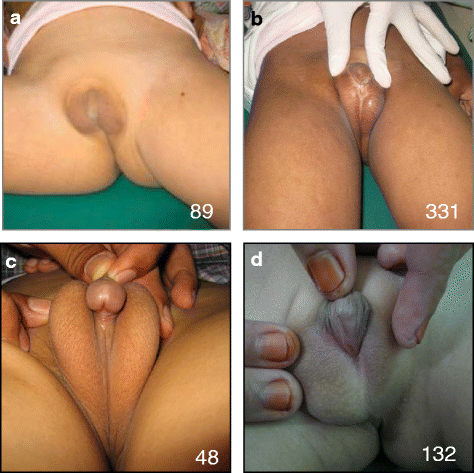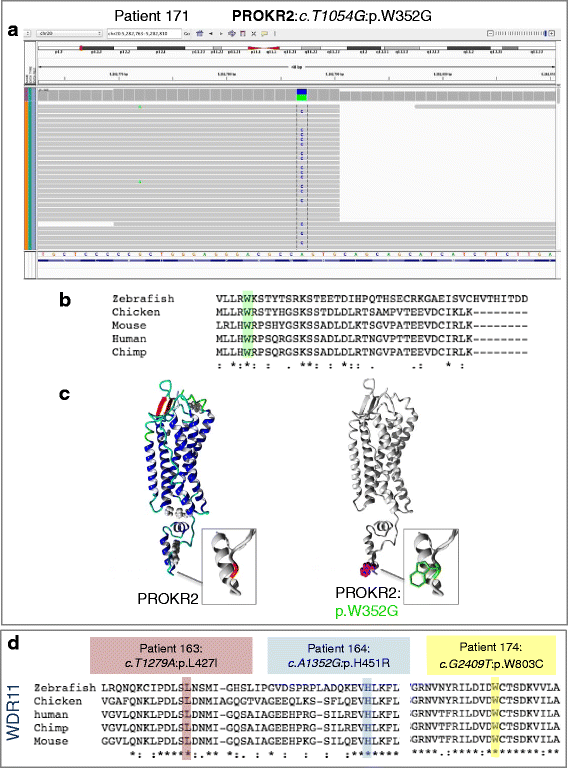Variants in congenital hypogonadotrophic hypogonadism genes identified in an Indonesian cohort of 46,XY under-virilised boys
- PMID: 28209183
- PMCID: PMC5314676
- DOI: 10.1186/s40246-017-0098-2
Variants in congenital hypogonadotrophic hypogonadism genes identified in an Indonesian cohort of 46,XY under-virilised boys
Abstract
Background: Congenital hypogonadotrophic hypogonadism (CHH) and Kallmann syndrome (KS) are caused by disruption to the hypothalamic-pituitary-gonadal (H-P-G) axis. In particular, reduced production, secretion or action of gonadotrophin-releasing hormone (GnRH) is often responsible. Various genes, many of which play a role in the development and function of the GnRH neurons, have been implicated in these disorders. Clinically, CHH and KS are heterogeneous; however, in 46,XY patients, they can be characterised by under-virilisation phenotypes such as cryptorchidism and micropenis or delayed puberty. In rare cases, hypospadias may also be present.
Results: Here, we describe genetic mutational analysis of CHH genes in Indonesian 46,XY disorder of sex development patients with under-virilisation. We present 11 male patients with varying degrees of under-virilisation who have rare variants in known CHH genes. Interestingly, many of these patients had hypospadias.
Conclusions: We postulate that variants in CHH genes, in particular PROKR2, PROK2, WDR11 and FGFR1 with CHD7, may contribute to under-virilisation phenotypes including hypospadias in Indonesia.
Keywords: Congenital hypogonadotrophic hypogonadism; Disorder of sex development; Hypospadias; Targeted gene sequencing; Under-virilisation.
Figures


References
-
- Boehm U, Bouloux P-M, Dattani MT, de Roux N, Dodé C, Dunkel L, et al. Expert consensus document: European Consensus Statement on congenital hypogonadotropic hypogonadism—pathogenesis, diagnosis and treatment. Nat Rev Endocrinol. 2015;11:547–564. - PubMed
Publication types
MeSH terms
Substances
LinkOut - more resources
Full Text Sources
Other Literature Sources
Miscellaneous

